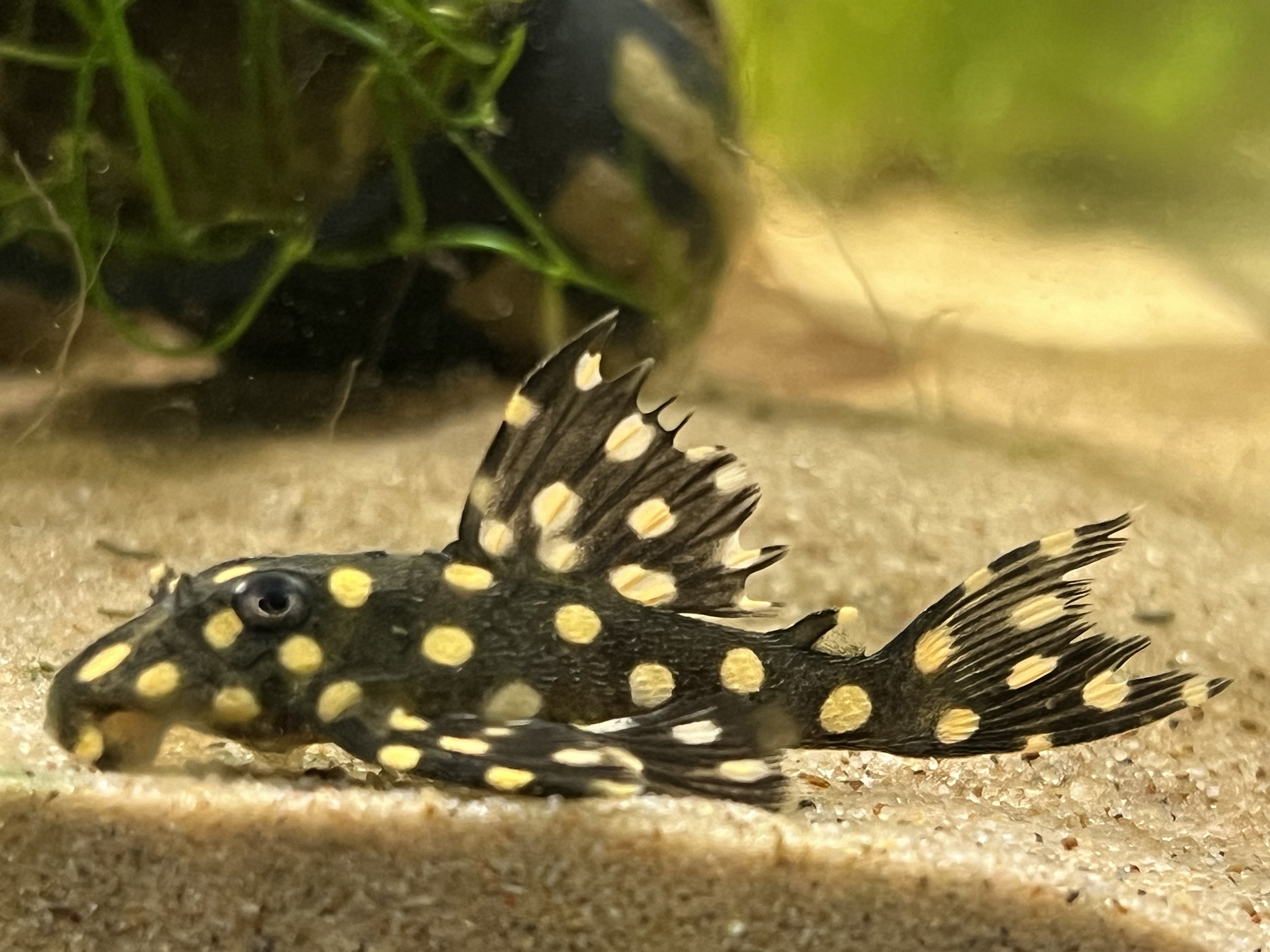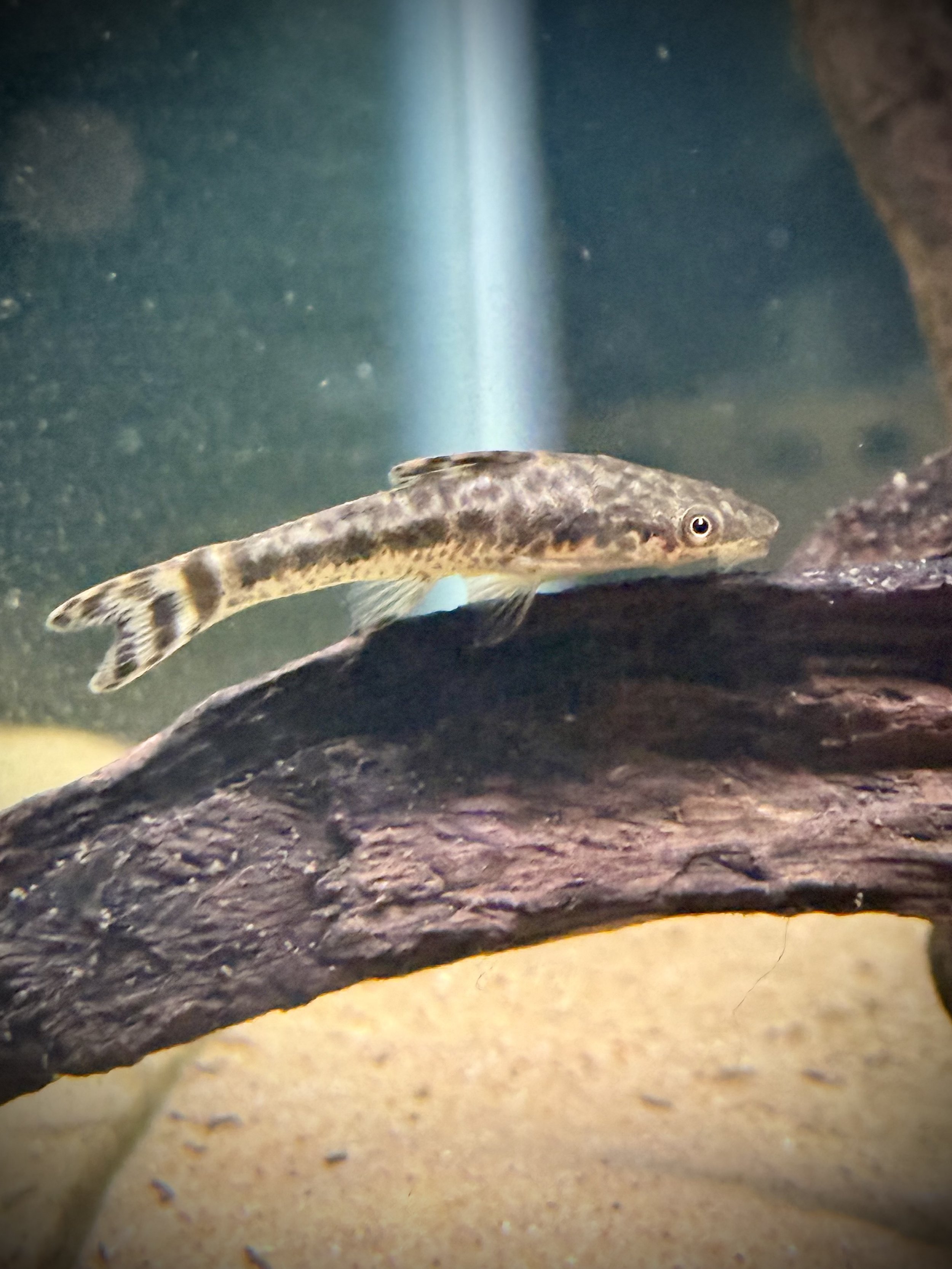 Image 1 of 2
Image 1 of 2

 Image 2 of 2
Image 2 of 2



Super Red Bristlenose Plecostomus M
The Bristlenose Plecostomus, scientifically known as Ancistrus cirrhosus, is a popular freshwater catfish species originating from South America. Specifically, they are found in the Amazon River basin, including tributaries in Brazil, Venezuela, and Colombia. In their natural habitat, these fish inhabit slow-moving waters, often near riverbanks or areas with submerged structures like rocks and driftwood.
In terms of their physical characteristics, Bristlenose Plecos boast a distinctive appearance with flattened bodies covered in armor-like plates and a high dorsal fin. The most notable feature is the "bristles" around the mouth, particularly prominent in males, resembling a bushy beard.
Typically, these catfish grow to a size of 4 to 6 inches (10-15 cm). They exhibit various color variations, such as brown, albino, and calico, and their coloration may change based on factors like age, diet, and environmental conditions.
Known for their peaceful nature, Bristlenose Plecos are well-suited for community aquariums. Their algae-eating habits make them valuable for maintaining a clean tank. Nocturnal by nature, they tend to hide during the day and become more active in the evening.
In aquariums, it is essential to provide hiding spots like caves or driftwood for these catfish. They adapt to a wide range of water conditions but prefer slightly acidic to neutral pH levels and temperatures between 72-78°F (22-26°C).
Breeding Bristlenose Plecos is feasible in captivity, and breeding pairs can be encouraged with the introduction of appropriate caves or hiding spots. Males guard the eggs until they hatch, and the fry feed on algae and commercial fry foods.
Maintaining a well-balanced diet, performing regular water changes, and creating a secure environment contribute to the overall health and longevity of Bristlenose Plecos, mimicking their natural habitat in the Amazon River basin.
The Bristlenose Plecostomus, scientifically known as Ancistrus cirrhosus, is a popular freshwater catfish species originating from South America. Specifically, they are found in the Amazon River basin, including tributaries in Brazil, Venezuela, and Colombia. In their natural habitat, these fish inhabit slow-moving waters, often near riverbanks or areas with submerged structures like rocks and driftwood.
In terms of their physical characteristics, Bristlenose Plecos boast a distinctive appearance with flattened bodies covered in armor-like plates and a high dorsal fin. The most notable feature is the "bristles" around the mouth, particularly prominent in males, resembling a bushy beard.
Typically, these catfish grow to a size of 4 to 6 inches (10-15 cm). They exhibit various color variations, such as brown, albino, and calico, and their coloration may change based on factors like age, diet, and environmental conditions.
Known for their peaceful nature, Bristlenose Plecos are well-suited for community aquariums. Their algae-eating habits make them valuable for maintaining a clean tank. Nocturnal by nature, they tend to hide during the day and become more active in the evening.
In aquariums, it is essential to provide hiding spots like caves or driftwood for these catfish. They adapt to a wide range of water conditions but prefer slightly acidic to neutral pH levels and temperatures between 72-78°F (22-26°C).
Breeding Bristlenose Plecos is feasible in captivity, and breeding pairs can be encouraged with the introduction of appropriate caves or hiding spots. Males guard the eggs until they hatch, and the fry feed on algae and commercial fry foods.
Maintaining a well-balanced diet, performing regular water changes, and creating a secure environment contribute to the overall health and longevity of Bristlenose Plecos, mimicking their natural habitat in the Amazon River basin.
The Bristlenose Plecostomus, scientifically known as Ancistrus cirrhosus, is a popular freshwater catfish species originating from South America. Specifically, they are found in the Amazon River basin, including tributaries in Brazil, Venezuela, and Colombia. In their natural habitat, these fish inhabit slow-moving waters, often near riverbanks or areas with submerged structures like rocks and driftwood.
In terms of their physical characteristics, Bristlenose Plecos boast a distinctive appearance with flattened bodies covered in armor-like plates and a high dorsal fin. The most notable feature is the "bristles" around the mouth, particularly prominent in males, resembling a bushy beard.
Typically, these catfish grow to a size of 4 to 6 inches (10-15 cm). They exhibit various color variations, such as brown, albino, and calico, and their coloration may change based on factors like age, diet, and environmental conditions.
Known for their peaceful nature, Bristlenose Plecos are well-suited for community aquariums. Their algae-eating habits make them valuable for maintaining a clean tank. Nocturnal by nature, they tend to hide during the day and become more active in the evening.
In aquariums, it is essential to provide hiding spots like caves or driftwood for these catfish. They adapt to a wide range of water conditions but prefer slightly acidic to neutral pH levels and temperatures between 72-78°F (22-26°C).
Breeding Bristlenose Plecos is feasible in captivity, and breeding pairs can be encouraged with the introduction of appropriate caves or hiding spots. Males guard the eggs until they hatch, and the fry feed on algae and commercial fry foods.
Maintaining a well-balanced diet, performing regular water changes, and creating a secure environment contribute to the overall health and longevity of Bristlenose Plecos, mimicking their natural habitat in the Amazon River basin.




